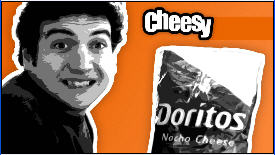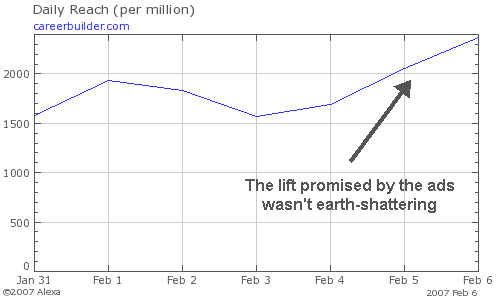It’s hard to believe it was eight years ago when Victoria’s Secret aired its first-ever Super Bowl commercial, announcing the live webcast of a Spring Fashion Show. Like yelling free beer in a crowded frat house, the ensuing stampede crashed the company’s servers. The injury!
More recently, GM invited consumers to create and post their own videos extolling the virtues of the Chevy Tahoe. The entries were not entirely what GM expected. The humiliation!
Online buzz surrounding this year’s Superbowl ads was about the various contests for the best user-generated ads. And America was watching, not so much to see which sponsors leave the event victorious, but to see what brands got carried off on stretchers.
Like the game these ads interrupt, this was a high-stakes and risky competition. Especially this year. What makes this particular Grand Guignol so riveting was that the rules are not fully written. Will sponsors trying to open up their ads to the masses be able to keep out the cheeky smart-alecs from the proceedings?
We knew they could control the ads that are shown on the actual telecast. But what about the real user-generated videos that will follow?
 Doritos tore a page from the new media playbook. They announced the challenge under a tight deadline — late last year — and opened the videos to American Idols-like voting, thus absolving themselves of responsibility for a bad choice. In an additional, shrewd move, they ran the winner early enough in the game to call it “world’s first fan-produced Superbowl ad.” The winning ad was only so-so in effectiveness — unless you consider the ad’s budget and production timeline (two digits and four days).
Doritos tore a page from the new media playbook. They announced the challenge under a tight deadline — late last year — and opened the videos to American Idols-like voting, thus absolving themselves of responsibility for a bad choice. In an additional, shrewd move, they ran the winner early enough in the game to call it “world’s first fan-produced Superbowl ad.” The winning ad was only so-so in effectiveness — unless you consider the ad’s budget and production timeline (two digits and four days).
I’ll be adding updates to this post as I see what the true ROI is for the user-generated advertisers in this year’s Superbowl, especially Doritos. One possible help to this brand: Dale Bachus, the leader of the winning ad (shown here) has a delightful story to tell. One possible threat: Snarky video producers on free-rein sites like YouTube, deciding to do their own, unauthorized Doritos ads.
If any of them catch fire the way the Chevy Tahoe ads did, their stories will be the ones consumers remember.
Stay tuned.
Superbowl night postscript: My favorite user-generated ad was the NFL ad shown at the two-minute warning. But maybe it was because the pay-off was a cameo by Brett Favre, in a sly reference to his recent announcement of not yet retiring. What can I say? I’m a Wisconsinite.
Update: Sunday, Feb. 11, 2007
It’s been a week since this post first aired and sadly I saw none of the insurrection one would expect of the same people who savaged the Chevy Tahoe and lonelygirl15. What’s with people nowadays, when you can’t see some user-generated vitriole? Here’s what I did observe:
- Cymfony.com did an excellent job of rating the ads, both before and after they appeared during the Superbowl. The Dorito’s ad did extraordinarily well in its consumer tests. The fact that it didn’t thoroughly excite anyone is expected. It offended nearly no one, according to Cymfony’s polling. (Here’s a demonstration of this phenomenon: Think of a dozen people you know and try to imagine of a restaurant they would all enjoy. Now try to think of one they’d all like that isn’t boring and “safe”).
- Many advertisers tried to leverage their ads through online campaigns, but the most successful, I suspect, were CareerBuilder’s. Those who understand the power of the internet to drive web traffic (see the Victoria’s Sectet example at the beginning of this post) were the target of the following ad. It urged readers to post on CareerBuilder because the web traffic following the Super Bowl would be huge. This is a believable proposition, especially to those who remembered the inspired monkey ads from last year and the year before. I’m sure the web-based ads worked well, but according to Alexa (see the graphic below) the bump in traffic was nothing to write home about. This year’s CareerBuilder ads were underwhelming.
 
Two questions:
1) I saw that NFL ad, and it didn’t even occur to me that it was user-generated. What does that say about the quality (of both user-generated and agency-generated)?
2) If an agency were to use Brett Favre in an ad, then the advertiser would have to pony up some big bucks. Did the NFL pay him for this ad?